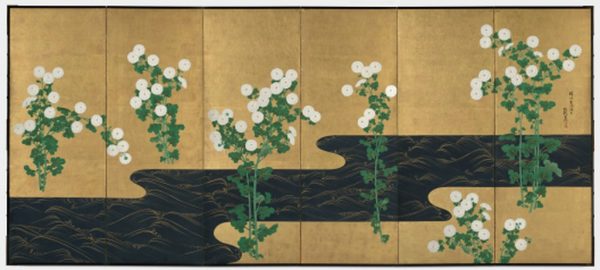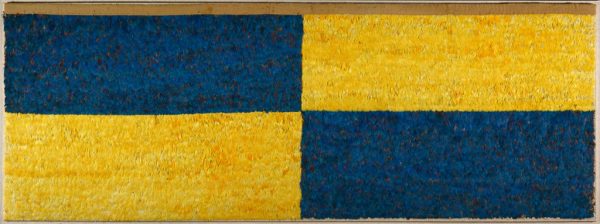Portrait of a Couple 1580ã¢â“1585 ââ“ Cleveland Museum of Art
New: Open Artstor: The Cleveland Museum of Art
Explore one of our finest museums virtually

Ogata Korin, follower of. Chrysanthemums past a Stream. Late 1700s – early 1800s. One of a pair of folding screens; ink and color on aureate paper. Image and data provided by The Cleveland Museum of Art. CCO 1.0.
In collaboration with The Cleveland Museum of Art and their comprehensive Open Admission initiative, Artstor has published an expansive pick of works from this leading repository, freely available to all and with Creative Commons licenses in Open up Artstor: The Cleveland Museum of Fine art. This is part of a new, complimentary initiative to aggregate open museum, library, and archive collections beyond disciplines on the Artstor platform — already a destination for scholars using visual media. Incorporating more than than x,000 years of history and iconic works from every corner of the world, this collection includes nearly 29,000 images offering considerable coverage of the museum'southward encyclopedic collection — paintings from Nicolas Poussin to Georgia O'Keeffe, precious jewels and scrolls from China, Japanese screens and kimonos, African and Native American ritual attire and objects, pre-Columbian gold, photography, and much more.
An elegant screen from the workshop of Ogata Korin at the end of the Edo catamenia, belatedly 1700s-early 1800s, highlights the museum's extensive Asian holdings, while two singular and distinctive portraits point the depth and quality of the European paintings: Lorenzo Lotto's vigorous rendering of a gentleman, c. 1533-1534, is a dynamic foil to the contained lethargy of Kathleen Newton, the companion and muse to the French painter James Tissot, in Seaside, 1878, an allegory of summertime.
Thanks to the breadth offered on a digital platform, nosotros are now able to uncover the subconscious treasures of the museum. A suite of sculpted heads provides a range of historic eras and cultures: the atomic ivory face from an Egyptian cosmetic spoon, 1391-1353 BCE, from the reign of Amenhotep Three; a subtly modeled earthenware likeness of a young homo, from Veracruz, Mexico. c. 600-900; and a roaring terracotta lion, c. 400s BCE, possibly a waterspout, from classical Greece.
Curious minds may likewise discover artistic interpretations of natural specimens: a print by the cunning Maverick creative person Wencelaus Hollar, Hippopus maculatus Lam (bear paw mollusk), 1640s; the self-taught Mary Altha Nim'due south Butterfly, 19th-20th century, a watercolor and so delicate and uncomplicated that the savvy shading along the wing edges comes every bit a surprise; and the Recumbent Stag of historic French animalist Rosa Bonheur, a sophisticated tribute to a noble beast.

Republic of peru. Feathered Panel. 600-900. Papagayo macaw feathers, cotton fiber manifestly-weave textile; camelid fiber plainly-weave cloth. Prototype and information provided past The Cleveland Museum of Art. CCO 1.0.
The rich cultural trove of the museum is exemplified past the bold and monumental feathered panel, 600-900, from the Wari people of the Andes. Bright rectangles of gold and blue macaw feathers announced initially like the abstracted planes of a color field painting. Closer inspection reveals the texture and lustre of thousands of feathers, knotted and bound to a cotton wool surface. Such a panel was ane of dozens created to adorn a ceremonial or sacred infinite.
We encourage yous to explore the museum'southward virtual vaults and make some discoveries of your own.
Open Artstor: The Cleveland Museum of Fine art
– Nancy Minty, Collections editor
Source: https://www.artstor.org/2020/03/19/new-open-artstor-the-cleveland-museum-of-art/








0 Response to "Portrait of a Couple 1580ã¢â“1585 ââ“ Cleveland Museum of Art"
Post a Comment